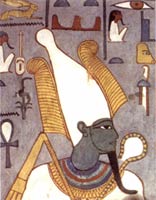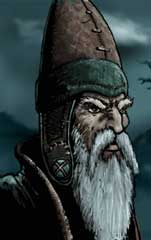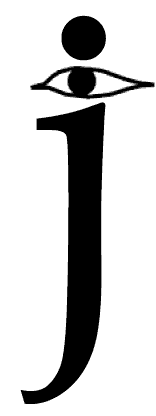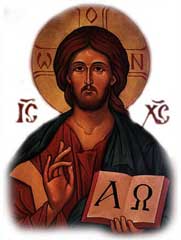
Alphabet J ©

Assur's beard is one of his parts that Isis gathered for his resurrection.
The majuscule (capital) letter J is a picture of Assur's beard.


The beard is a part of every image of Assur. Egyptian kings were "divine kings." They were "living gods" who were descendants of the gods. The Egyptian hieroglyphic symbol for a god is a bearded figure. Egyptian kings wore beards in their official images whether they had beards in real life or not. The king filled many positions in the government. The beard on the king symbolized his position as judge and giver of laws, as distinct from his position as head of the army for instance.
The significance of the beard is that the beard moves when the chin moves -- as in speaking. Assur was the judge of the dead. His beard moved when he uttered the final judgment. The essential meaning of the beard is "powerful in speech." A king is powerful in speech. His word is law. His judgments are final.
Pagan religion was "wisdom religion." The majuscule letters are heaven symbols. They're all wisdom symbols. The king was not merely powerful. The king was wise. The beard symbolizes wise in judgment, judicious in speech, a maker of wise laws. The beard also had a symbolic connection to the power of prophecy.
In ancient times, men swore oaths by the beard of Assur. Down through a long period of history, men swore oaths by their own beards. Muhammad forbade men from swearing oaths by their beards, so they swore oaths "by the beard of the prophet" instead. Swearing oaths by the beard of the prophet (Muhammad) was a common practice among Muslim men until relatively recent times. Even in the nineteenth century Muslim men verified the truth of their words by swearing on the beard of the prophet.
The minuscule letter j is a picture of a bearded man's face in profile.

 The (majuscule) capital letters are heaven symbols. The (minuscule) small letters
are earth symbols. The majuscule letter J represents Assur's beard. The minuscule letter j is a picture of a bearded man's face in profile. The body of the j is his beard. The dot over the beard is the man's eye.
The (majuscule) capital letters are heaven symbols. The (minuscule) small letters
are earth symbols. The majuscule letter J represents Assur's beard. The minuscule letter j is a picture of a bearded man's face in profile. The body of the j is his beard. The dot over the beard is the man's eye.
The ancient scribes of the Thoth school had a difficult task in finding ways to picture abstract notions such as wisdom, judgment, and prophecy. In many cases, the sounds of the letters are clearly related to the pictures of what they represent. In the case of the letter j, there is no clear connection between the symbol and the sound. The ancient scribes surely made such a connection, but across the span of time and different cultures that separate then from now, the connection is no longer apparent.
ADDENDUM #1
This family of ancient kings were descendants of Assur.

During the Ice Age, the Mediterranean Basin was a great valley. Assur's ancestors lived in the Mediterranean Valley. When the Ice Age melted down, the valley flooded. Assur's people moved up out of the Mediterranean Valley ahead of rising waters. Those refugees from the Flood established the first agrarian civilizations in the Nile Delta and the Levant.
The original people of the Mediterranean Valley were pre-UrReans. (These were the original Atlantians.) They were extremely hairy folks. They had heavy coats of body hair, tremendous beards, and a single bushy eyebrow without the gap at the middle. They were larger and more intelligent people than those of the surrounding lands. They outsmarted and overpowered their rivals. (Note the large "wisdom eyes" and unparted eyebrow on the Sumerian figure above.)
Assur was the first king of the first kingdom on earth. Following the melt down of the Ice Age, he established the first line of hereditary kings. Prior to Assur, there were tribal chieftains, but there were no kings. Assur and his descendants established a far-flung empire of related kingdoms in the prehistorical era before the advent of writing. Those were the original UrRean kingdoms.
(See the Sunwing page on this website for information about the UrRean kingdoms.)
The kings of all those early UrRean kingdoms were heavily bearded men. Several thousands of years later, the kings of that region, legitimately or otherwise, claimed that they were descendants of those original kings. The heirs of later generations wore symbolic beards even though they had become much less hairy folks with two eyebrows. As in the case of Tut Ankh Amen, they wore symbolic beards even if they were beardless youths.
One of the kings above is Ashur Banipal. The name Ashur means king. Banipal was an Assyrian king. The name Assyria means Assur UrRea. In the Roman alphabet, the majuscule letter C is a picture of a council circle. It represents the government of the ancient empire that Assur established. The name Caesar is a compound of C, the council circle of Assur, plus the name Assur. The name Caesar (C + Assur) identifies him as a member of Assur's council circle. According to the classical definition, the name Caesar meant "the hairy one".
ADDENDUM #2
The name Jesus is composed of J + Isis. Jesus was a Beard-of-Isis.
 According to conventional Christian theology, Jesus was born to a Jewish mother on her way to Egypt. Nothing was heard of him again until he was thirty-years-old. Many people have speculated about where was Jesus and what he was doing during those missing thirty years. Biblical scholars have conspicuously avoided the possibility that he was in Egypt, even though that makes the most sense.
According to conventional Christian theology, Jesus was born to a Jewish mother on her way to Egypt. Nothing was heard of him again until he was thirty-years-old. Many people have speculated about where was Jesus and what he was doing during those missing thirty years. Biblical scholars have conspicuously avoided the possibility that he was in Egypt, even though that makes the most sense.
His name Jesus says Beard-of-Isis. His name reveals where he was and what he was doing during the early part of his life. He was a student of Isis' teachings in Egypt. Jesus was a prophet, preacher, teacher and practitioner of Isis' religion. Jesus was alegedly a member of a religious community called Essenes. The name Essenes says Isis-sons. Biblical scholarship claims that the Essenes were a Jewish sect. It is unlikely that a hermetic community of Isis-sons practiced Judaism.
The entire Jesus legend is derived directly from the Pagan trinity of gods, Assur, Isis, and Heru. The "father who art in heaven" is Assur. The Immaculate Conception is from Isis' union with her deified ancestor. The "born king," the resurrection of Jesus, his teachings of universal love, every significant feature of the Jesus legend comes directly from Isis' religion. None of it has any basis in Judaism.
Jesus wasn't a Jew or a Christian. The marriage of Christianity to Judaism was a marriage of political convenience. It had nothing to do with Jesus' teachings. At the time Jesus was born, Egypt and Syria were both under Roman conquest. Palestine/Judea fell soon afterward. The whole region was rife with anti-Roman sentiments and revolution. The Romans took all of that region from the Greeks. The Greeks were intent on putting together any and every possible coalition of forces that opposed Rome in that region.
"Wars make strange bedfellows." "The enemy of my enemy is my friend." Jesus and his followers were opponents of Judaism. They agreed only in their opposition to Rome. Jesus was a great enlightened Pagan teacher. His teachings were welded to the Jewish Torah in the Bible, in Greece, long after he was dead. The Prince of Peace was used to rally a war. The Goddess of Love was sacrificed for that war. The records of the ancient world, except the Bible, were destroyed in that war.
Resurrect Isis. Her womb is the source of this entire species Homo sapiens sapiens. Her teachings of love and respect are the moral foundations of human civilization.
|
Reader responses are invited. |
Return to Home Page . . . Return to Table of Contents Hub
Links to alphabet pages:
Link to Alphabet Page I . . . Link to Alphabet Page K
Links to related topic pages:
Visual Language . . . Sunwing . . . Pagan Genesis